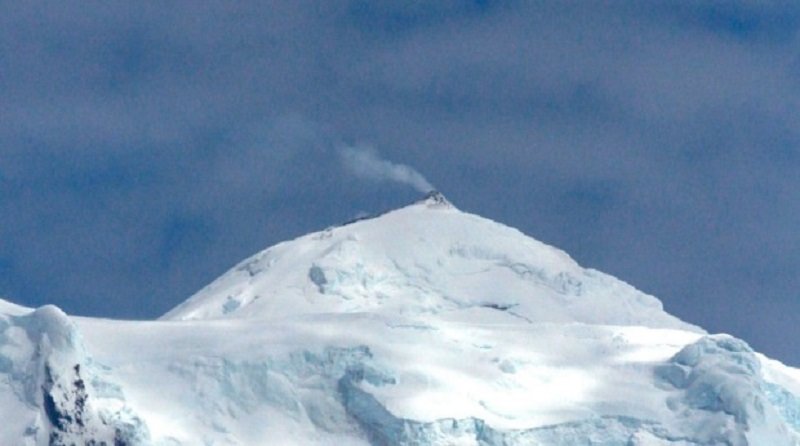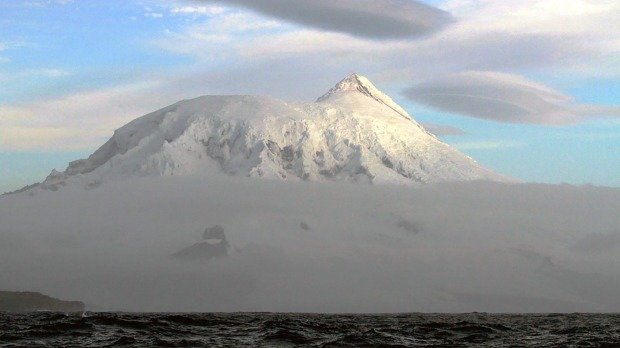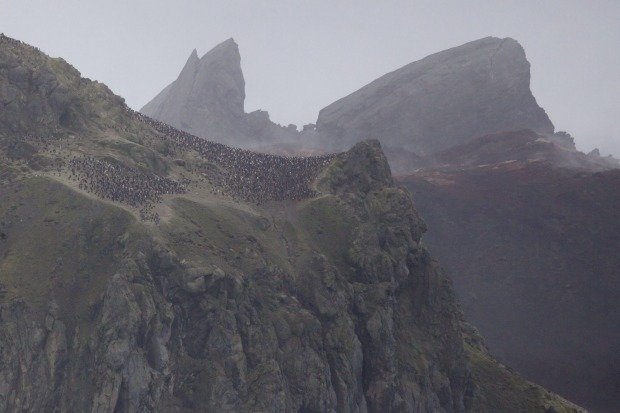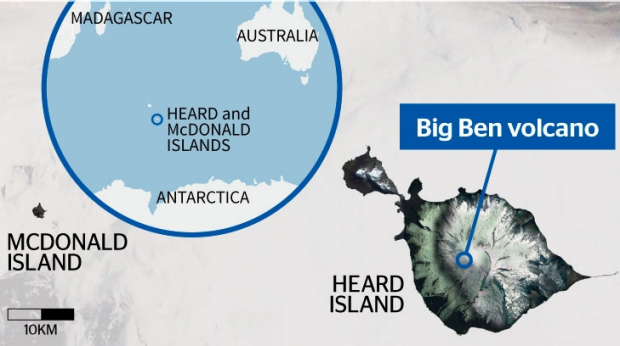The Big Ben volcano on remote Heard Island in sub-Antarctica, almost 1800 kilometres north of Australia's Antarctic base at Davis Station, erupted a combination of poisonous gases and red-hot lava. It was the first time it had done so in decades.
The other volcano, on the neighbouring McDonald islands, erupted gas only. Scientists on board the CSIRO's RV Investigator were visiting the islands to conduct research into the concentration of iron in Antarctic waters.We witnessed the lava descending Big Ben interacting dramatically with the snow and ice cover of the mountain.
Richard Arculus, ANU volcanologist
"We witnessed the lava descending Big Ben as it interacted dramatically with the snow and ice cover of the mountain," said ANU volcanologist Professor Richard Arculus, who witnessed the eruption first hand.
"It is possible that a quenched carapace of glass is formed over the lava allowing the flow to descend considerable distances downhill, forming lava tubes."
Big Ben volcano is one of the most active in the world. Changes in appearance of the lava flows on the summit of Big Ben during successive days indicate active eruptions have been taking place over the past week, Professor Arculus said.
Volcanoes erupt when the Earth's magma, which is lighter than surrounding rock, rises and collects in subterranean chambers. Eventually some of the magma pushes through vents and fissures and erupts as lava on the surface.
"The lava types erupting from Big Ben are the end-products of extensive processes of selective crystal withdrawal from alkali-rich basalts within crustal magma chambers," he explained.
The end-product of this process is a lava type characteristic of other hot-spot volcanoes like Mt Erebus, Kilimanjaro and Gran Canaria.
"The eruptions were once-in-a-lifetime events for scientists on board," said Monash University geologist Associate Professor Steven Micklethwaite.
"Although it was difficult to do much more than watch and observe, the insights gained into the eruption behaviour of such a furiously remote volcano are important.
"Monitoring these types of eruptions tells us about how lava interacts with ice, which can be quite spectacular," Associate Professor Micklethwaite said.
Expeditioner Jodi Fox, whose doctoral thesis is on Heard Island volcanism, said observing lava flowing down the flank of Big Ben over a glacier was incredible.
"Given persistent cloud cover and generally foul weather, I didn't think we'd observe much of the volcano on this voyage," she said.
The team spotted the eruption while circling the islands to map the sea floor to identify hydrothermal systems driven by underwater volcanoes. Scientists believe these are driving the Southern Ocean ecosystem from the bottom-up.
They are testing the hypothesis that hydrothermal systems release iron, a fertiliser for planktonic blooms, which create half of the planet's oxygen.
The research sheds light on global fluctuations in nutrients. It will also help determine the merits of artificially seeding the oceans with iron in order to increase the uptake of atmospheric carbon dioxide, the main driver of climate change.







Reader Comments
to our Newsletter